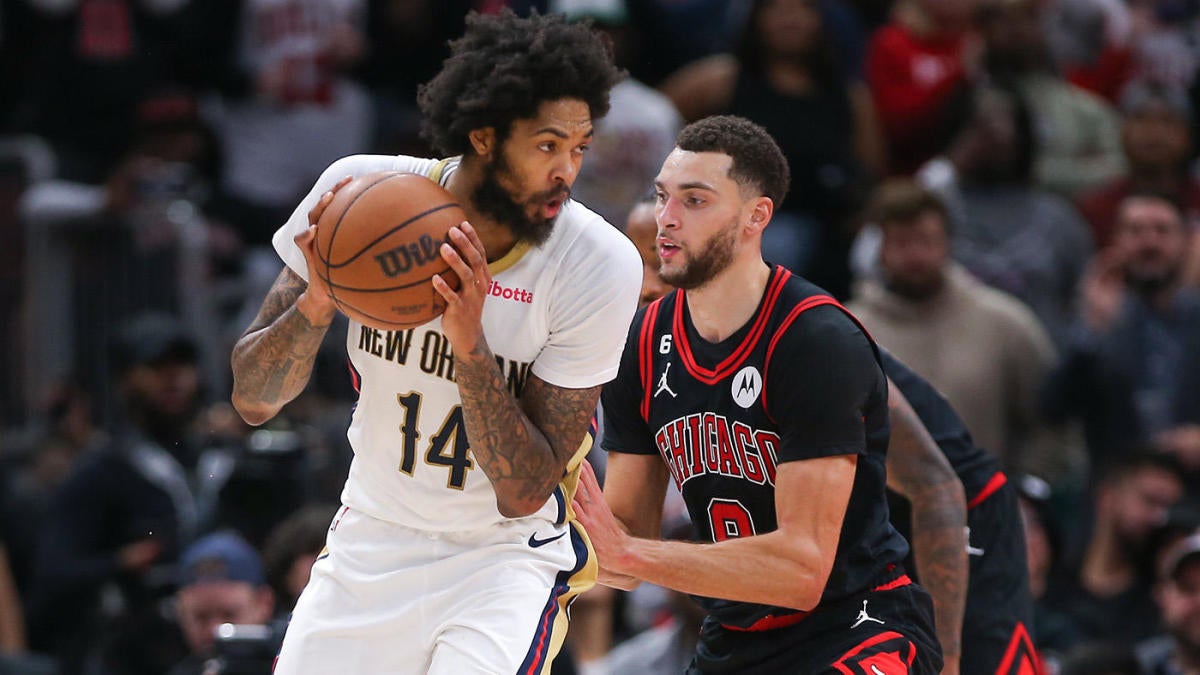The 2024 NBA Trade Deadline: A Shift in Dynamics
The 2024 NBA trade deadline was widely regarded as uneventful, leaving fans and analysts alike scratching their heads. With the new Collective Bargaining Agreement (CBA) in place, the landscape of player movement has dramatically changed, leading to two distinct schools of thought regarding the future of trades in the league.
The Pessimist’s Perspective: A Stifled Market
From a pessimistic viewpoint, the new CBA has imposed such stringent restrictions on player movement that the lack of trades seen in 2024 may become the new norm. Currently, 11 teams find themselves above the first apron, effectively barring them from trading with one another. This situation creates a bottleneck, particularly for competitive teams that typically seek to bolster their rosters mid-season. The restrictions are not just a minor inconvenience; they fundamentally alter the way teams can approach trades, leading to a stagnant market where significant upgrades become increasingly difficult.
The Optimist’s Outlook: Creativity in Constraints
Conversely, the optimist’s perspective suggests that the CBA is merely a hurdle to overcome rather than a permanent roadblock. Historically, when new CBAs are introduced, it often takes a year or two for teams to adapt and learn how to navigate the new rules. As teams become more familiar with the restrictions, creativity tends to flourish, leading to renewed player movement. With many franchises currently all-in on championship aspirations, the stakes are high, and teams are likely to find ways to maneuver within the confines of the new CBA.
The Challenge of Superstar Trades
While the potential for trades exists, the reality is that blockbuster deals involving superstars may be off the table for the foreseeable future. Take Jimmy Butler, for example. The Miami Heat, one of the teams above the first apron, would struggle to find a suitable trading partner among other contenders facing similar restrictions. The financial implications of trading a player like Butler—who commands a significant salary—make it nearly impossible for two teams in the same salary bracket to engage in a meaningful trade.
This scenario applies to many of the league’s top players. While there may be surprises—such as a desperate team or an anxious star—most trades will likely involve players with more straightforward paths to relocation. These players may have lower salaries, be younger, or come from teams willing to accept less than their market value.
Players to Watch: Trade Candidates
With the complexities of the new CBA in mind, let’s explore ten players who could be on the move this season, using the CBS Sports top 100 rankings as a guide.
-
Brandon Ingram (New Orleans Pelicans): The Pelicans have been actively seeking to trade Ingram, especially after acquiring Dejounte Murray, who plays a similar role. With Ingram’s hefty contract and the team’s need for a center, a trade could be imminent if they decide to prioritize filling that gap.
-
Julius Randle (New York Knicks): Randle’s fit in New York is still debated, but the Knicks have a pressing need for a rim-protecting center. If they struggle early in the season, Randle’s salary could be used as a trade chip to address that need.
-
Darius Garland (Cleveland Cavaliers): With Donovan Mitchell’s extension, Garland’s future in Cleveland has come into question. The Cavaliers may consider moving him if they can find a suitable wing in return, especially given the redundancy of having two point guards.
-
Jarrett Allen (Cleveland Cavaliers): Similar to Garland, Allen’s role alongside Evan Mobley raises questions about his long-term fit. If the Cavaliers falter, Allen could become a trade candidate as they look to reshape their roster.
-
Zach LaVine (Chicago Bulls): LaVine’s contract and performance have made him a liability for the Bulls. With three years left on his max deal and a disappointing season behind him, Chicago may be eager to offload him, but finding a willing trade partner could prove challenging.
-
Jerami Grant (Portland Trail Blazers): Grant’s recent re-signing complicates Portland’s situation, especially after the trade request from their franchise player. As the team embraces a rebuild, moving Grant could yield valuable assets.
-
Jonathan Kuminga (Golden State Warriors): The Warriors are in win-now mode, seeking to trade for a veteran star. Kuminga’s potential makes him a valuable asset, and if the Warriors decide to pursue a trade, he could be the centerpiece.
-
Anfernee Simons (Portland Trail Blazers): With the emergence of Scoot Henderson and Shaedon Sharpe, Simons may find himself on the trading block. His age and contract make him an attractive option for contenders looking to bolster their backcourt.
-
Jalen Green (Houston Rockets): Green’s future with the Rockets is uncertain, especially with the influx of young talent. If the Rockets can’t find common ground on an extension, trading him could be a prudent move.
- Bogdan Bogdanovic (Atlanta Hawks): As the Hawks pivot towards a younger core, Bogdanovic’s age and skill set may not align with their future plans. Moving him could help Atlanta acquire assets that better fit their vision.
The Future of Trades in the NBA
As the NBA navigates this new era of player movement, the landscape will undoubtedly evolve. While the current restrictions pose challenges, the potential for creativity and strategic maneuvering remains. Teams will need to adapt, and as they do, the trade market may become more dynamic than it appears today. The coming months will be crucial in determining how franchises respond to the new CBA and what that means for player movement across the league.
